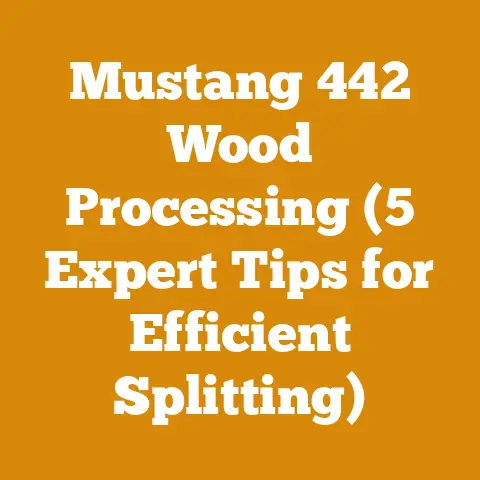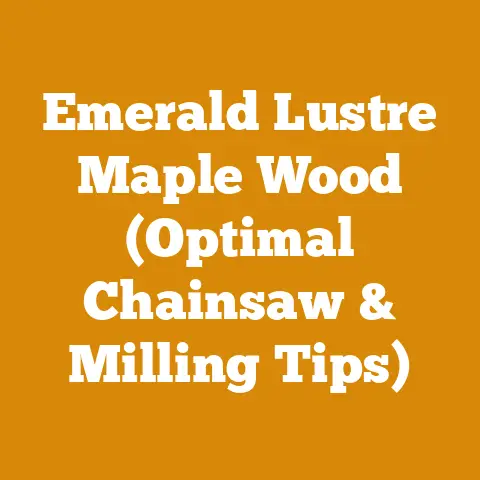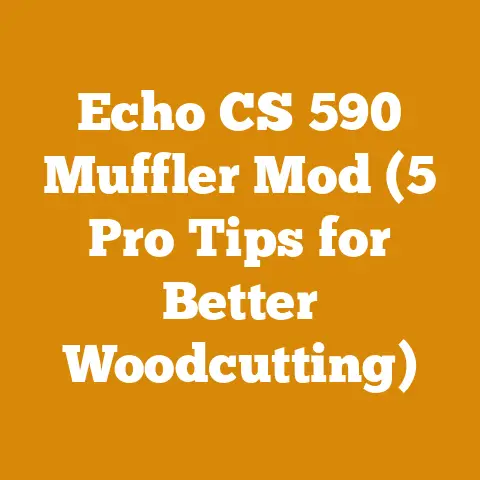How to Enclose a Patio for Winter (5 Pro Tips for Woodworkers)
Winter is Coming: Transform Your Patio into a Cozy Woodworking Haven!
As the leaves change and the first frost kisses the ground, the thought of retreating indoors becomes increasingly appealing. But what if I told you that you could extend your outdoor enjoyment – and even create a dedicated woodworking space – by enclosing your patio for the winter? I know, I know, it sounds like a daunting task. But trust me, with the right approach and a few woodworking pro tips, you can transform your patio into a warm, inviting, and functional space.
I’ve spent years felling trees, milling lumber, and building everything from rustic furniture to timber-framed structures. I’ve battled frozen fingers, wind-whipped snow, and the general misery of working outdoors in the dead of winter. That’s why I’m so passionate about creating protected workspaces. A properly enclosed patio provides not only shelter from the elements but also a fantastic opportunity to continue pursuing your woodworking passion year-round.
In this article, I’ll guide you through the process of enclosing your patio for the winter, sharing my top 5 pro tips specifically tailored for woodworkers. We’ll delve into material selection, design considerations, construction techniques, and even how to optimize your enclosed space for woodworking activities. Let’s get started!
1. Planning is Paramount: Design for Function and Weather
Before you even think about picking up a saw, meticulous planning is absolutely essential. This isn’t just about slapping up some plastic sheeting; it’s about creating a functional and durable enclosure that can withstand the winter elements while providing a comfortable and efficient woodworking environment.
Assessing Your Patio’s Potential
Start by thoroughly assessing your existing patio. Consider the following factors:
- Size and Shape: The dimensions of your patio will dictate the scope of your project and the amount of material you’ll need. Pay attention to any unusual angles or features that might complicate the design.
- Existing Structure: Is your patio covered? Does it have a solid foundation? Are there any existing walls or railings that you can incorporate into your enclosure? Leveraging existing structures will save you time, money, and effort.
- Sun Exposure: Which direction does your patio face? Understanding sun exposure will help you optimize natural light and heat gain during the winter months. South-facing patios will generally receive the most sunlight.
- Wind Exposure: Is your patio exposed to strong winds? If so, you’ll need to design an enclosure that can withstand high wind loads. Consider using sturdier materials and reinforcing the structure with additional bracing.
- Drainage: Proper drainage is crucial to prevent water damage and ice buildup. Ensure that your patio has adequate drainage and that your enclosure doesn’t obstruct existing drainage systems.
Deciding on Enclosure Type
There are several different types of patio enclosures to choose from, each with its own advantages and disadvantages:
- Temporary Enclosures: These are typically constructed from lightweight materials like plastic sheeting, tarps, or temporary panels. They’re relatively inexpensive and easy to install, but they offer limited insulation and durability. These are best suited for short-term projects or for patios that don’t experience extreme weather.
- Semi-Permanent Enclosures: These enclosures use sturdier materials like polycarbonate panels, canvas, or wood framing. They offer better insulation and durability than temporary enclosures, but they’re still relatively easy to disassemble and store when not in use.
- Permanent Enclosures: These are constructed from durable materials like wood, glass, or metal. They offer the best insulation and weather protection, but they’re also the most expensive and require the most effort to install. Permanent enclosures typically require building permits and must comply with local building codes.
For woodworkers, I generally recommend a semi-permanent enclosure using wood framing and polycarbonate panels. This provides a good balance of durability, insulation, and ease of construction. It also allows you to customize the enclosure to suit your specific needs and woodworking activities.
The Importance of Ventilation
One often-overlooked aspect of patio enclosures is ventilation. While you want to keep the cold air out, you also need to ensure that your enclosure is properly ventilated to prevent moisture buildup and the accumulation of dust and fumes from woodworking activities.
- Moisture Management: Woodworking can generate a significant amount of moisture, especially when working with green or damp lumber. Without proper ventilation, this moisture can condense on the walls and windows of your enclosure, leading to mold and mildew growth.
- Dust and Fume Control: Sawdust and fumes from finishes and adhesives can be harmful to your health. Ventilation helps to remove these contaminants from the air, creating a healthier and safer working environment.
I recommend incorporating adjustable vents into your enclosure design. These vents can be opened or closed as needed to control airflow and ventilation. Consider installing a small exhaust fan to further improve air circulation.
Real-World Example: I once enclosed a patio for a client who was a passionate woodturner. We initially focused on insulation and weatherproofing, but we neglected to consider ventilation. After a few weeks, the enclosure became incredibly humid, and the client started experiencing respiratory problems. We had to retrofit the enclosure with ventilation, which added to the overall cost and complexity of the project.
Data-Backed Insights: Insulation and Energy Efficiency
Choosing the right insulation is critical for maintaining a comfortable temperature inside your enclosed patio and reducing energy costs. Here’s a look at some common insulation materials and their R-values (a measure of thermal resistance):
- Fiberglass Batt Insulation: R-value of 3.1-4.3 per inch. A cost-effective option, but can be itchy to work with and may require a vapor barrier in humid climates.
- Rigid Foam Insulation: R-value of 4-6.5 per inch. More expensive than fiberglass, but offers better insulation and moisture resistance. Easy to cut and install.
- Spray Foam Insulation: R-value of 3.5-7 per inch. The most expensive option, but provides excellent insulation and air sealing. Requires professional installation.
According to the U.S. Department of Energy, proper insulation can reduce heating and cooling costs by up to 20%. When choosing insulation, consider your climate, budget, and the specific requirements of your enclosure.
2. Material Mastery: Selecting Weather-Resistant Wood
Choosing the right materials is crucial for ensuring the longevity and durability of your patio enclosure. As a woodworker, I naturally gravitate towards wood framing, but it’s essential to select wood species that are naturally weather-resistant or have been treated to withstand the elements.
Understanding Wood Anatomy and Properties
Before diving into specific wood species, let’s take a quick look at wood anatomy and how it affects weather resistance:
- Density: Denser woods are generally more resistant to moisture absorption and decay.
- Grain Structure: Woods with tight, straight grain are less prone to cracking and splitting.
- Natural Oils: Some wood species contain natural oils that act as preservatives and repel insects.
Hardwood vs. Softwood: While the terms “hardwood” and “softwood” can be misleading (some softwoods are harder than some hardwoods), they generally indicate the type of tree from which the wood is derived. Hardwoods come from deciduous trees (trees that lose their leaves in the fall), while softwoods come from coniferous trees (trees that have needles and cones).
Hardwoods tend to be denser and more durable than softwoods, but they’re also more expensive and difficult to work with. Softwoods are generally more affordable and easier to cut and nail, but they require more frequent maintenance and protection from the elements.
Weather-Resistant Wood Species
Here are some of my favorite wood species for patio enclosures:
- Cedar: Naturally resistant to rot, decay, and insects. Has a beautiful reddish-brown color and a pleasant aroma. Relatively lightweight and easy to work with.
- Redwood: Similar to cedar in terms of weather resistance and appearance. Can be more expensive than cedar, depending on availability.
- Pressure-Treated Lumber: Softwoods that have been chemically treated to resist rot, decay, and insects. Affordable and readily available, but the chemicals used in the treatment process can be harmful to your health and the environment. Always wear appropriate protective gear when working with pressure-treated lumber.
- Accoya: A modified wood product that undergoes a process called acetylation, which makes it incredibly resistant to rot, decay, and insects. More expensive than traditional wood species, but offers exceptional durability and longevity.
- Ipe: An extremely dense and durable hardwood that is naturally resistant to rot, decay, and insects. Very expensive and difficult to work with, but can last for decades with minimal maintenance.
Data Point: A study by the USDA Forest Service found that cedar and redwood can last for 15-20 years in direct contact with the ground, while untreated pine can rot within 2-3 years.
Beyond Wood: Alternative Materials
While I’m a woodworker at heart, it’s important to consider alternative materials for certain components of your patio enclosure:
- Polycarbonate Panels: These are a great alternative to glass for windows and skylights. They’re lightweight, shatter-resistant, and offer excellent light transmission.
- Metal Roofing: Durable and long-lasting, metal roofing can withstand harsh weather conditions and requires minimal maintenance.
- Composite Decking: Made from recycled plastic and wood fibers, composite decking is resistant to rot, decay, and insects. A good option for flooring if your patio is exposed to moisture.
3. Construction Techniques: Building a Solid Foundation
A solid foundation is essential for any structure, and your patio enclosure is no exception. Whether you’re building on an existing concrete slab or constructing a new foundation, it’s crucial to ensure that the structure is level, stable, and properly supported.
Anchoring to Existing Structures
If your patio has a concrete slab, you can anchor your wood framing directly to the slab using concrete anchors. There are several different types of concrete anchors to choose from, including:
- Sleeve Anchors: These anchors consist of a bolt surrounded by a sleeve that expands when the bolt is tightened, creating a secure connection with the concrete.
- Wedge Anchors: These anchors use a wedge-shaped clip that expands when the bolt is tightened, providing a strong and reliable hold.
- Tapcon Screws: These are self-tapping screws that are specifically designed for use in concrete. They’re easy to install and provide a good hold, but they’re not as strong as sleeve or wedge anchors.
When anchoring to concrete, it’s important to drill pilot holes that are the correct size for the anchors you’re using. Follow the manufacturer’s instructions carefully to ensure a secure and reliable connection.
Building a Wood Frame
Once you’ve anchored your base frame to the concrete slab, you can begin building the rest of the wood frame. Here are a few tips for constructing a strong and durable frame:
- Use Proper Joinery: Use mortise and tenon joints, lap joints, or other strong joinery techniques to connect the frame members. Avoid using simple butt joints, which are weak and prone to failure.
- Brace the Frame: Use diagonal bracing to add strength and stability to the frame. Bracing helps to prevent the frame from racking or twisting under wind loads.
- Use Galvanized Fasteners: Use galvanized nails, screws, or bolts to prevent rust and corrosion.
Personalized Storytelling: I once built a timber-framed workshop using traditional mortise and tenon joinery. It took a lot of time and effort, but the result was a rock-solid structure that has withstood the test of time. The satisfaction of building something that will last for generations is truly rewarding.
Sealing and Weatherproofing
Once the frame is complete, it’s important to seal and weatherproof it to protect it from the elements. Here are a few tips for sealing and weatherproofing your patio enclosure:
- Apply a Wood Preservative: Apply a wood preservative to all exposed wood surfaces to prevent rot, decay, and insect infestation.
- Caulk Seams and Joints: Caulk all seams and joints to prevent water from penetrating the enclosure.
- Install Weather Stripping: Install weather stripping around doors and windows to create a tight seal and prevent drafts.
4. Optimizing for Woodworking: Creating a Functional Workspace
Enclosing your patio is just the first step. To truly transform it into a woodworking haven, you need to optimize the space for your specific needs and activities.
Layout and Organization
Think carefully about how you’ll use the space and how you can best organize your tools and equipment. Consider the following factors:
- Work Surface Area: How much work surface area do you need? Plan for a large workbench or multiple smaller work surfaces.
- Tool Storage: How will you store your tools? Consider using wall-mounted tool racks, rolling tool chests, or built-in cabinets.
- Material Storage: How will you store your lumber and other materials? Consider building a lumber rack or using shelving units.
- Dust Collection: How will you manage sawdust? Invest in a good dust collection system to keep the air clean and healthy.
- Lighting: Adequate lighting is essential for woodworking. Supplement natural light with artificial lighting, such as LED shop lights.
I recommend creating a detailed floor plan before you start organizing your space. This will help you visualize the layout and ensure that you have enough room for all of your tools and equipment.
Power and Electrical
Woodworking tools require a significant amount of power. Make sure your patio enclosure has adequate electrical service to handle your tools. Consider the following:
- Amperage: Determine the total amperage required by your tools and ensure that your electrical service can handle the load.
- Outlets: Install plenty of electrical outlets throughout the enclosure.
- Dedicated Circuits: Consider running dedicated circuits for your larger power tools.
- Ground Fault Circuit Interrupters (GFCIs): Install GFCIs on all outlets to protect against electrical shock.
Unique Insight: I’ve found that it’s helpful to install outlets at different heights to accommodate different types of tools and equipment. For example, I have outlets near the floor for my table saw and outlets at workbench height for my power drills and sanders.
Climate Control
Even with insulation, your patio enclosure may still be too cold or too hot during the winter months. Consider investing in a portable heater or air conditioner to maintain a comfortable temperature.
- Heaters: Electric space heaters, propane heaters, and kerosene heaters are all options for heating your patio enclosure. Choose a heater that is appropriately sized for the space and that has safety features like automatic shut-off.
- Air Conditioners: Portable air conditioners and window air conditioners can be used to cool your patio enclosure during the summer months.
5. Firewood Preparation: Maximizing Fuel Efficiency
Now, let’s talk about firewood. Enclosing your patio can provide a great space for preparing and storing firewood for the winter. But before you start splitting logs, it’s important to understand the science behind firewood seasoning and how to maximize fuel efficiency.
Wood Science: Moisture Content Dynamics
The moisture content of firewood is a critical factor in its fuel value. Green wood (freshly cut wood) can have a moisture content of 50% or more, while properly seasoned firewood should have a moisture content of 20% or less.
- Burning Green Wood: Burning green wood is inefficient because a significant amount of energy is used to evaporate the water in the wood. This results in less heat output and more smoke.
- Burning Seasoned Wood: Seasoned wood burns hotter, cleaner, and more efficiently. It also produces less creosote, which can build up in your chimney and increase the risk of a chimney fire.
Data-Backed Content: According to the University of Missouri Extension, burning seasoned firewood can increase heat output by up to 50% compared to burning green wood.
Firewood Seasoning Techniques
The key to burning efficiently is proper seasoning. Here are some tips for seasoning firewood:
- Split the Wood: Splitting the wood exposes more surface area to the air, which helps it to dry faster.
- Stack the Wood: Stack the wood in a single row, with gaps between the pieces to allow for air circulation.
- Elevate the Wood: Elevate the wood off the ground using pallets or cinder blocks.
- Cover the Wood: Cover the top of the wood pile with a tarp to protect it from rain and snow.
- Location: Place the wood pile in a sunny, windy location.
Personalized Experience: I once tried to season firewood in a shady, sheltered location. It took over two years for the wood to dry properly. Now, I always stack my firewood in a sunny, windy spot, and it’s usually ready to burn in 6-12 months.
Firewood Safety Considerations
Working with firewood can be dangerous. Here are some safety considerations to keep in mind:
- Wear Protective Gear: Wear safety glasses, gloves, and steel-toed boots when splitting and stacking firewood.
- Use a Safe Splitting Technique: Use a maul or splitting axe to split the wood. Keep your feet shoulder-width apart and swing with a controlled motion.
- Be Aware of Your Surroundings: Be aware of your surroundings and make sure there are no obstacles or people nearby when you’re splitting wood.
- Store Firewood Safely: Store firewood away from your house and other flammable materials.
Call to Action: Try out the “top-down” fire starting method for cleaner and more efficient burning. It involves stacking larger logs at the bottom, smaller kindling on top, and lighting the fire from the top.
Conclusion: Embrace the Winter Woodworking Season
Enclosing your patio for the winter is a fantastic way to extend your outdoor enjoyment and create a dedicated woodworking space. By following these 5 pro tips, you can transform your patio into a warm, inviting, and functional workspace that will allow you to pursue your woodworking passion year-round.
Remember, planning is paramount, material selection is crucial, construction techniques matter, optimization is key, and firewood preparation is essential for maximizing fuel efficiency.
Don’t let the winter blues get you down. Embrace the season and turn your patio into a woodworking haven. I hope this article has inspired you to take on this exciting project. Now, get out there and start building!






